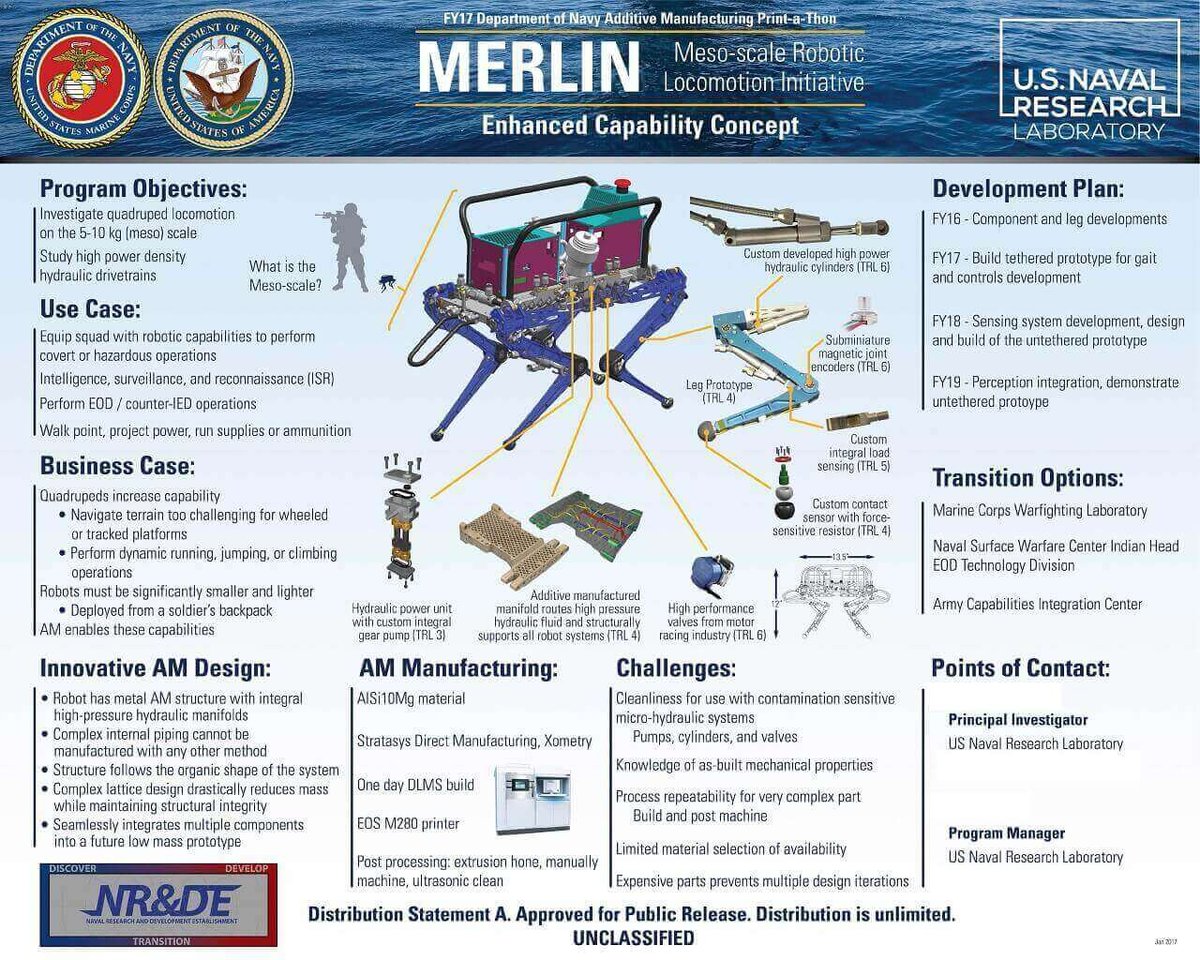The Navy 3D Print-a-thon held at the Pentagon saw twenty naval organizations displaying their most recent 3D printed innovations.
Last week was the Fiscal Year 2017 Department of the Navy 3D Print-a-thon. This event involved twenty naval organizations meeting to display their latest and greatest 3D printed innovations.
The Office of the Assistant Secretary of the Navy for Research, Development, and Acquisition hosted the event. 3D printed items on display showed everyone from sailors to scientists how the Navy intends to implement the technology.
Impressively, all of the inventions are either completely 3D printed or contain mostly 3D printed components. The hope is that by using 3D printing, it’ll be possible to “enhance warfighting capabilities and readiness/sustainment.”
One notable innovation was a quadruped robot – the Meso-scale Robotic Locomotion Initiative (MeRLln). This design is very portable and can even jump, run or climb. 3D printing is used to “construct custom high-pressure hydraulic manifold that also serves as the robot’s structure”.
MERLIN Works its Magic at the 3D Print-a-Thon
The benefits of 3D printing are that you can quickly make parts which are low cost, customizable, or both. To this end, there were many usable prints on display from antennas to propellers.
However, the MeRLIn quadruped locomotive offers something new. It weighs in at only 5-10kg, meaning squads can easily transport the robot with them. It takes just one day to build using Stratasys Direct Manufacturing, Xometry.
The 3D printed design can be used to perform hazardous or covert operations, such as intelligence, surveillance and reconnaissance (ISR). The robot can navigate tricky terrain which is too difficult to access using wheeled vehicles. If successful it could make missions a lot easier, and consequently keep lives safe in the field.
Mark Jue, Naval Surface Warfare Center, Port Hueneme Division innovator, said: “The Navy and Marine Corps should care about 3D printing because this is a money saver and is also a way for us to advance our technology.”
Source: America’s Navy

License: The text of "US Navy Holds a 3D Print-a-Thon at the Pentagon" by All3DP is licensed under a Creative Commons Attribution 4.0 International License.